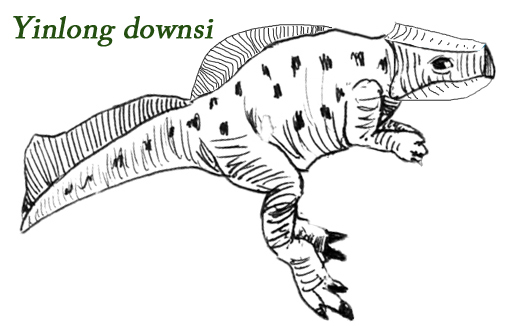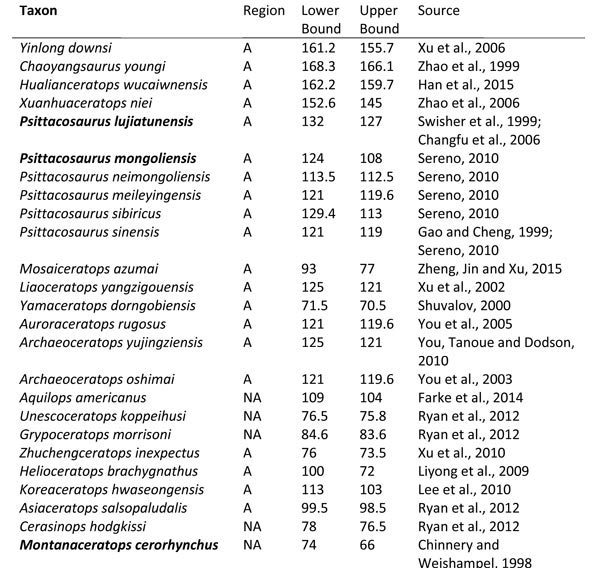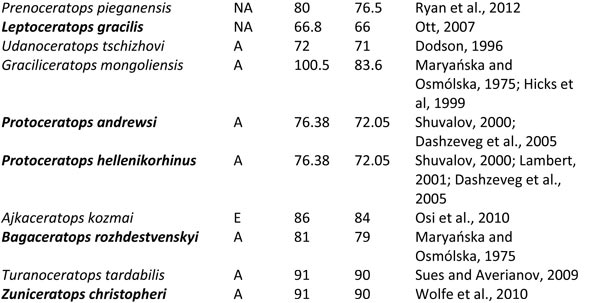Ceratopsian Species – When and Where they Lived (Part 1)
Ceratopsian Species – Where and When did they Live (part 1)
A few days ago, Everything Dinosaur published an article which summarised some remarkable research into the ceratopsian family tree undertaken by a team of international scientists. This research team, that included researchers from the University of London, postulated that all those fancy frills and horns associated with the horned dinosaurs, probably evolved to help individuals attract a mate. This statistical study involved mapping when different species of horned dinosaur lived, where they lived and what other ceratopsians may have been contemporaneous.
Ceratopsian Dinosaur Study
In the supplementary data, the researchers provided a marvellous ceratopsian family tree plotted against geological time. Quite a feat considering more than seventy species of horned dinosaur were analysed. In addition, the team published very useful tables that summarised the data they had compiled. The table listed the horned dinosaurs and provided information about which continent their fossils had been found and calibrated their approximate ages (upper limit and lower limit of stratigraphical distribution).
Plotting Ceratopsian Species Against Temporal and Geographical Distribution
Table credit: Andrew Knapp, Robert J. Knell, Andrew A. Farke, Mark A. Loewen, David W. E. Hone published in the Proceedings of the Royal Society B (Biology).
The table (above) shows temporal calibrations and geographical locations of ceratopsian species. Taxa that were included in the morphological character state analysis (the research into horns and crests), are indicated in bold type. Region abbreviations: Asia: A; North America: NA; Europe: E.
Yinlong downsi
One of the earliest ceratopsians described to date is Yinlong downsi, fossils of which were found in Upper/Middle Jurassic aged rocks in Xinjiang Province (western China). It is likely that the ceratopsian lineage originated in the Middle Jurassic and that these bird-hipped dinosaurs first evolved in Asia.
An Illustration of Yinlong downsi – An Early Ceratopsian

Picture credit: Everything Dinosaur
Building on the Shoulder of Giants
The research team collated a significant amount of data that had been produced by other scientists. Using this extensive research (source of the data is recorded in the table), a table listing ceratopsian species, where they lived and when they lived was produced.
Plotting Ceratopsian Species Against Temporal and Geographical Distribution (Part 2)
Table credit: Andrew Knapp, Robert J. Knell, Andrew A. Farke, Mark A. Loewen, David W. E. Hone published in the Proceedings of the Royal Society B (Biology).
For dinosaur models including ceratopsians: Dinosaur Models and Prehistoric Animal Figures.
The second part of the table lists horned dinosaurs from the Late Cretaceous (majority) and also includes the first reference to a horned dinosaur from Europe Ajkaceratops kosmai, which is known from anterior portions of the skull and jaws discovered in Hungary.
To read our article from 2010, which discusses the discovery of the first European ceratopsian (A. kosmai): Evidence of European Ceratopsians Grows With Hungarian Discovery.
We congratulate the research team conducting the statistical study into the ornamentation of the Ceratopsia and praise all those patient, dedicated scientists that helped to provide the data set for them to work on. it is such a detailed ceratopsian dinosaur study. A second article will be published shortly that features the rest of the horned dinosaur temporal and geographical distribution table.
To read our original article on the ceratopsian research: Why Did Horned Dinosaurs Have Fancy Frills?
To view the timeline of ceratopsian species – (a family tree of horned dinosaurs): A Horned Dinosaur Family Tree Plotted Over Geological Time.
Visit the Everything Dinosaur website: Everything Dinosaur.



